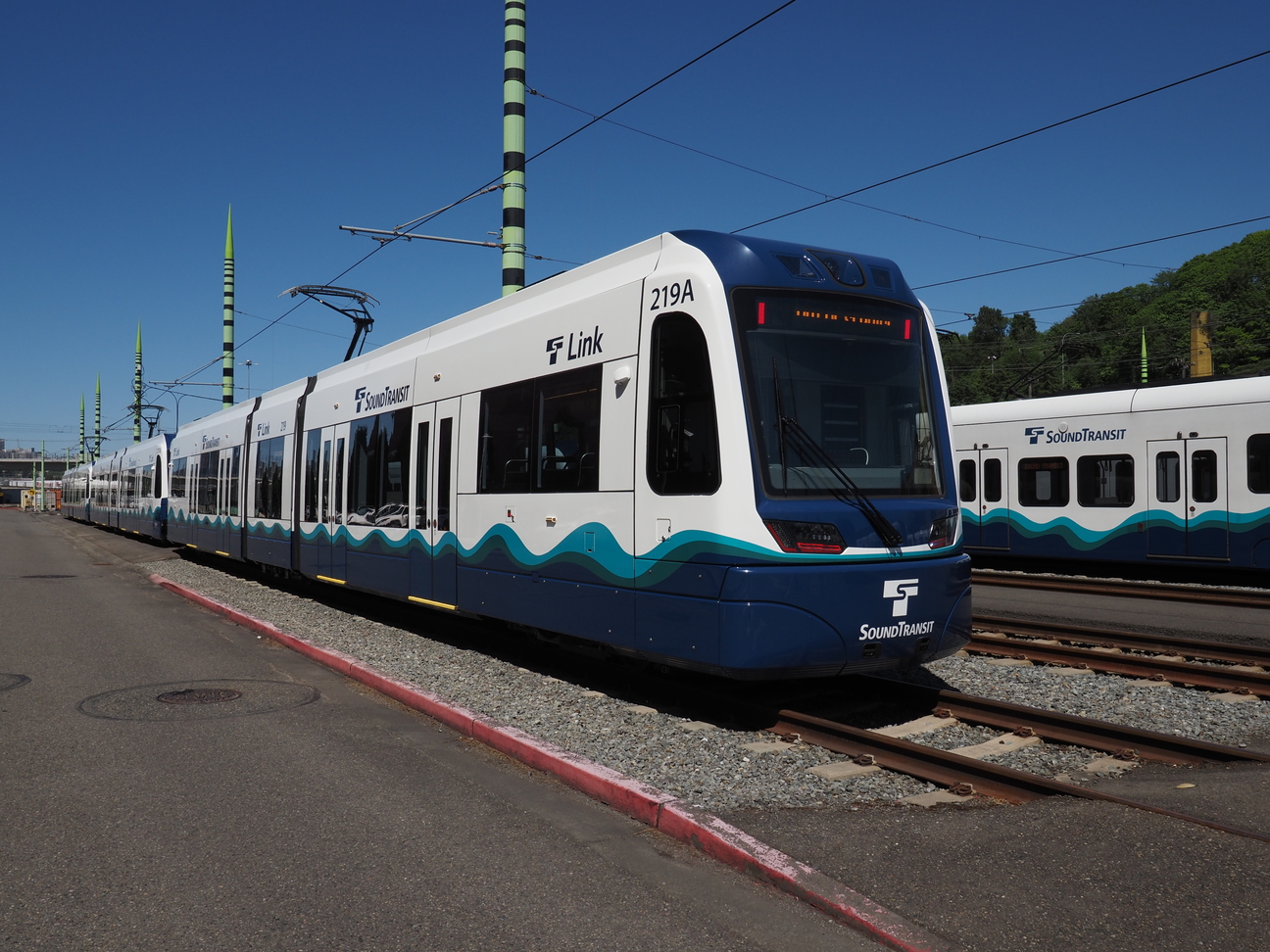On a glorious spring Friday, a little extra excitement was to be had aboard Link light rail last week as riders completed their routine afternoon transit journeys.
At eight stations (SoDo, Stadium, International District/Chinatown, Pioneer Square, University Street, Westlake, Capitol Hill, University of Washington) riders who happened to be on a platform at varying points between 1 and 2 PM Pacific were greeted by a three-car light rail vehicle (LRV) coated with Sound Transit’s familiar teal-and-navy wave livery, just like any other Friday.
Yet once aboard, they could see that this was a different kind of Link train. It was newer. It was roomier. Much brighter. There were many more bike racks.
And lots of cameras capturing the moment. The first of many big upgrades to light rail service in the Puget Sound region had arrived.

Members of the media and Sound Transit officials were among the passengers that a three car consist of Siemens S700 light rail vehicles carried northbound towards the current University of Washington terminus.
This was the first time a Siemens S700 Series 2 LRV, seen below, had been in “revenue service” — jargon for transit service open to the general public.

Since 2009, when Link opened to the public, riders have boarded one of sixty-two Kinkisharyo light rail vehicles to transport them to their destination.
With unprecedented system expansion on the horizon, Sound Transit has ordered a total of 152 new Series 2 LRVs, to be delivered over the next few years.
The Siemens rolling stock will slowly replace the Series 1 Kinkisharyo vehicles as they are delivered. For now, riders will be served by both types of vehicles.
With the network poised to expand rapidly in the coming months, the agency has unveiled its next generation of vehicles just in time.

And before the end of 2024, Lines 1 and 2 of the Link light rail system will connect Downtown Seattle to Lynnwood, Redmond, and Federal Way.
By that point, the network will nearly triple in length — which is why the agency needed to roughly triple the size of its light rail fleet.

Siemens has delivered forty-one Series 2 LRVs to Sound Transit already. They are stored and maintained at the Operations and Maintenance Facility (OMF) between SoDo and Beacon Hill stations in Seattle.
A new Operations and Maintenance Facility in Bellevue’s Spring District is also mostly complete. It has the capacity to store up to ninety-six LRVs, serving Line 2 (Redmond-Downtown-Lynnwood).

The Siemens vehicles were assembled in Sacramento, California. They have been tested extensively along existing and future trackage; the first vehicle has accumulated more than 1,000 miles since its delivery in June 2019.

That first vehicle was exhibited to the press at a mini open-house in June of 2019.

The excitement surrounding the Series 2 vehicles gives us a taste of what is to come. Our light rail system will triple in length.
For many commuters, car journeys will become much less appealing when high quality, high capacity rail transit becomes available.

New transit-oriented developments will enable more people to structure their lives around transit infrastructure in a way bus service does not adequately incentivize.
And even if your current journey will not be served by light rail, everybody benefits from having less traffic on the roads. As our region gradually moves past the acute health emergency the pandemic has created, how we get around our region will be fundamentally transformed for the better. With respect to mobility in our region, there will be no going back to what we previously considered normal.

